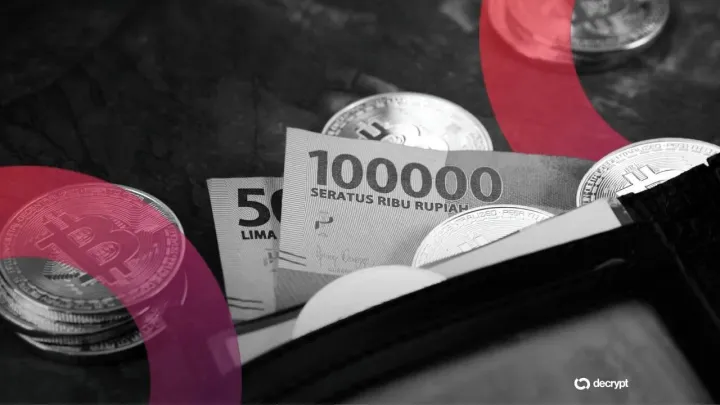How Mitosis Makes Multi-Chain Passive Income Effortless
Decentralized Finance (DeFi) has come a long way since its early days, transforming from a niche experiment to a global financial frontier boasting over $100 billion in Total Value Locked (TVL).
All this was actualized from staking to farming, lending to bridging yield opportunities abound. Yet, an average user still finds DeFi intimidating, fragmented and unnecessarily technical.
While some chains boast high yields, others promise security or ecosystem growth. But participating in these diverse opportunities requires juggling multiple wallets, gas tokens, bridges, protocols and a good dose of trial and error.
What if there were a way to consolidate the best of DeFi multi-chain potential into a single, smooth experience?
Well, Mitosis is a next-generation Layer 1 blockchain purpose-built to abstract the complexity of yield farming and deliver cross-chain yield with near-zero friction.
WHAT REALLY MAKES YIELD FARMING SO COMPLICATED?
Despite its lucrative reputation, yield farming across multiple chains presents significant challenges for everyday users:
- Liquidity Fragmentation
Each blockchain operates in isolation. Yield on Ethereum may differ vastly from Arbitrum or Optimism. Optimizing returns means constantly moving assets which is inefficient, risky and expensive. - Bridging Blues
Transferring assets across chains requires bridges, many of which are prone to high fees, security risks, or slow confirmation times. This creates a major barrier for both new and experienced users. - Wallet & Token Management
Every chain uses different wallets, gas tokens, and DeFi tools. Juggling them adds friction and discourages participation. - Time-Intensive Yield Hunting
Users must manually scan multiple protocols and APY dashboards to find the best returns.
The result? Many either stick to one chain or miss out on high-yield opportunities entirely.
WHAT IS MITOSIS TRULY BUILDING?
Mitosis is building an ecosystem that solves these pain points by introducing Ecosystem-Owned Liquidity (EOL) a model where yield-earning assets are aggregated, managed, and distributed across chains on behalf of the user.
When users deposit assets like weETH or USDC into Mitosis Vaults, those assets are automatically converted into miAssets (such as miweETH, miUSDC). These miAssets represent tokenized positions that earn cross-chain passive yield without the user needing to move funds, research strategies, or monitor risk.
What makes mitosis unique is how it integrates trusted DeFi tools and protocols under one roof to make complex, cross-chain strategies feel seamless and native.
Core Infrastructure and Partners Powering Mitosis
- Jumper Exchange – Integrated Bridging Layer
Jumper acts as a secure, built-in bridge, allowing users to seamlessly transfer assets across chains from inside the Mitosis UI. It eliminates the need to manually interact with third-party bridges and helps preserve user trust. - Hyperlane – Interchain Messaging Protocol
To coordinate vault strategies and asset movement across chains, Mitosis uses Hyperlane for real-time, decentralized messaging. This ensures user balances remain accurate and yield opportunities can be captured quickly. - Ether.fi – Staking Integration
Mitosis plugs into Ether.fi to allow users to passively stake their weETH and earn validator rewards while still remaining liquid via miweETH tokens. - Milkyway & Capsule – Farming Automation Engines
These partners scout for the most promising DeFi yield farms across chains (Polygon, Arbitrum, Optimism etc.) and help Mitosis auto-deploy capital into those farms, giving users the benefits without lifting a finger. - Ethos & EigenLayer – Security Stack
Mitosis partners with Ethos for non-custodial wallet protection and EigenLayer for modular security to safeguard user funds and smart contracts, creating a DeFi environment that’s both profitable and secure.
Let’s look at a typical user journey.
Micheal wants to earn yield on his weETH.
Instead of manually bridging, staking or yield farming, he:
- Connects his wallet to Mitosis.
- Deposits weETH into a Mitosis Vault.
- Instantly receives miweETH, which begins generating passive yield.
- Mitosis bridges some of micheal funds to Arbitrum via Jumper.
- Milkyway deploys it into a farm offering 10% APY.
- Hyperlane syncs vault strategies and rewards across Ethereum and Arbitrum.
- Ether.fi ensures staking rewards are still earned from weETH.
In his dashboard, micheal sees his miweETH balance growing with no complexity. Just optimized, cross-chain income.
INTRODUCING THE GAME OF MITO
To make onboarding fun and educational, Mitosis launched an interactive testnet experience called Game of Mito. Here, users can:
- Bridge testnet assets using Jumper
- Stake weETH and earn simulated rewards via Ether.fi
- Participate in cross-chain farming using Milkyway and Capsule
- Climb the leaderboard by collecting MITO Points
Early adopters not only learn how Mitosis works but they could also qualify for future incentives and airdrops.
WHY IS MITOSIS A GAMECHANGER FOR DEFI
Mitosis doesn’t try to be the next Ethereum or Solana. Instead, it complements them by becoming the yield optimization layer that pulls the best out of each chain and delivers it to users in a single token, miAsset.
- For beginners, it’s DeFi without the learning curve.
- For veterans, it’s yield optimization without the busywork.
- For the industry, it’s proof that multi-chain doesn’t have to mean multi-hassle.
In the same way that early banking apps made saving and investing accessible to the masses, Mitosis is doing for DeFi what Robinhood did for stocks. It abstracts complexity, automates strategy, and empowers everyday users to earn yield across the entire crypto landscape.
The future of DeFi is not just decentralized, it is interoperable, simplified, and user-first. With Mitosis, yield has no borders.
Found this insightful? Like, comment and share...


Comments ()